|
Types of Irrigation Systems
There are two main types of irrigation systems: low flow and high flow. Both can be utilized in one garden if needed. Low flow systems refer to micro spray, drip emitters, or drip lines. High flow systems are fixed spray, rotor, impact, bubbler, and soaker hose. Drip irrigation is preferable for most parts of the garden except lawns. Sprinklers are best for lawns and low growing groundcovers.
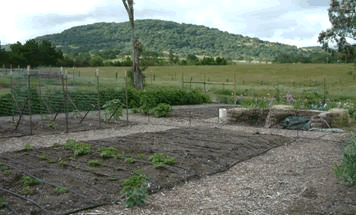
Drip irrigation for a vegetable garden.
Check with your local building department for any codes and regulations for your area concerning irrigation systems.
Low Flow Systems
Low flow irrigation (also known as micro irrigation) refers to emitters, drip lines, micro sprays, and mini rotors.
| ▪ | Micro spray and mini rotors clog easily, and need frequent adjustment. Use only if gardening at least twice a week and have time to clean clogged heads. |
| ▪ | Drip lines are recommended for continuously rooting ground covers such as Roman chamomile (see Plant List on Main Menu). |
| ▪ | Drip lines are flexible tubing with emitters (tiny water-flow regulators in each hole in the line) evenly spaced along the tubing. Drip lines are also called inline drip or subsurface drip. Some drip lines may be placed on top of the ground with an emitter(s) at each plant, and covered by a few inches of mulch. A subsurface drip line (underground) can be used to irrigate ground covers and lawn, but an experienced designer and installer is highly recommended in the case of lawns. Be very sure to install prior to installing the lawn. Installation can occur before (in ground) or after (above ground) for groundcovers. |
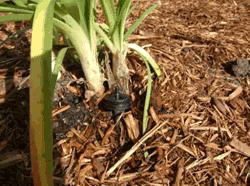 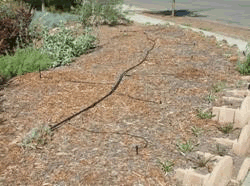
Drip irrigation emitter. Drip irrigation line.
| ▪ | For individual emitter layouts, water is delivered just where plants need it. This can reduce the area for, and number of, weeds in the garden. |
| ▪ | Water is applied very slowly in gallons per hour (gph). |
| ▪ | Inline drip must obviously operate at a reduced pressure in order to deliver only a small amount of water at a specified rate; thus requires a pressure reducer and filters. |
| ▪ | Drip systems can be connected to a hose end and manually operated, or permanently connected to your main water source and operated by an automatic controller. |
| ▪ | Plan enough capacity (emitters) to deliver the needed amount of water as your landscape matures. Use the product’s emitter selection chart to determine the flow rate and number of emitters per plant. |
| ▪ | For areas with long runs of tubing and changes in grade, pressure compensating emitters should be used. |
Areas of concern when using drip:
| ▪ | Polyethylene (“poly”) tubing on the surface in areas of heavy foot traffic or children’s play areas can easily be broken, disconnected, vandalized, or present a tripping hazard. |
| ▪ | Dogs, raccoons, gophers, and other animals may chew tubing and emitters. |
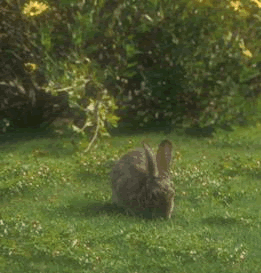
Rabbits may also chew through irrigation line.
| ▪ | If a pre-packaged drip kit is used, be sure the components are of high quality and right for the job. Keep the manufactures contact information so replacement parts can be located. |
| ▪ | Drip irrigation needs to be regularly maintained. |
High Flow Systems
Matched-precipitation sprinkler heads guarantee that a half-circle head will deliver just as much water per square foot as a full-circle head spraying the same distance. Matched precipitation simply means all heads deliver a uniform amount of water across each square foot of an irrigated area. Every blade of grass gets no more and no less than the next. Ask for assistance from a knowledgeable salesperson.
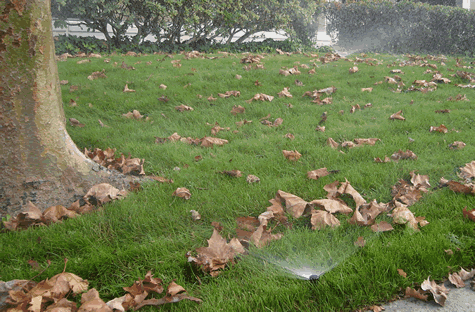
Fixed spray sprinklers
| ▪ | Fixed spray, rotors, or impact heads will apply water over large areas of landscaping such as turf and ground cover areas. |
| ▪ | High flow systems apply water in gallons per minute (gpm). |
| ▪ | Fixed spray, rotors, or impact sprinkler heads, should be placed so water from one sprinkler head reaches the adjacent heads, and water from those heads reach adjacent heads, including back to the ones that reach them (head-to-head coverage). |
| ▪ | Bubblers should be used in confined areas. Bubblers quickly flood an area and if not contained, will easily waste many gallons of water through run off. |
| ▪ | Soaker hoses are high flow devices with unregulated flow. The uneven flow along the hose makes them inefficient for long-term irrigation. |
| ▪ | Use irrigation devices that fit the size of the area to be watered. Over-spray causes damage to buildings, driveways, and sidewalks. |
| ▪ | Sprinkler heads at the lowest point of a sloped area should be equipped with check valves. Check valves prevent water being wasted by not allowing the pipes to drain out of the lowest heads and into the storm drains and into the Bay every time the water turns off. |
|
